Littlehampton Natural Health Centre
Welcome to the Littlehampton Natural Health Centre, a multidisciplinary clinic offering various health treatments, with our specialist Osteopath focusing on the treatment of muscular, joint, spinal, and functional conditions. Our clinic is based in the town of Littlehampton, close proximity to the beach on the south coast of West Sussex. Our practitioners are passionate about promoting natural health and well-being through a positive lifestyle – this includes healthy eating, regular exercise, and regular Osteopathy check-ups. Not to worry if this doesn’t sound like your current lifestyle, our Osteopath is here to help! Our Osteopath specialises in Osteopathic care for the whole family, providing Osteopathy treatment and education on how to maintain a healthy body.
Welcome To Osteopathy!
When visiting our clinic in Littlehampton you will be greeted with a big smile by our receptionist! We invite you to make yourself feel at home in our waiting area while you wait. We advise all our patients to arrive at least 5 minutes prior to their appointment; this will allow time to settle into the clinic before the start of an appointment.
We have plenty of on-street parking located on most roads around the clinic, directly out the front of our clinic and many roads surrounding, making access and parking for our patients easy and stress-free.
If it’s your first Osteopathy appointment, or we haven’t seen you for a few years, we like to spend some time getting to know you, or catching up on your life and health situation. This will include an informal chat, a personal history (including details on any past injuries, current medication, and any related conditions), and of course your reason for visiting the clinic. Once we have all the relevant information, your Osteopath will assess your function, muscle tension, range of motion, and overall joint condition, and perform tests to find out the root cause of your symptoms. We will then explain our findings and the necessary stages to help you return to normal function. If you and your Osteopath are both happy to proceed and no further information is required, your first treatment will then be offered at your first appointment.
Our Specialities
Our Osteopath doesn’t just specialise in one area, they have expert knowledge and experience in many areas including;
- Hip Pain
- Shoulder Pain
- Sports Injury
- Neck Pain
- Lower Back Pain
- Headaches
- Sciatica
- Arm Pain
- Leg Pain
- And much more!
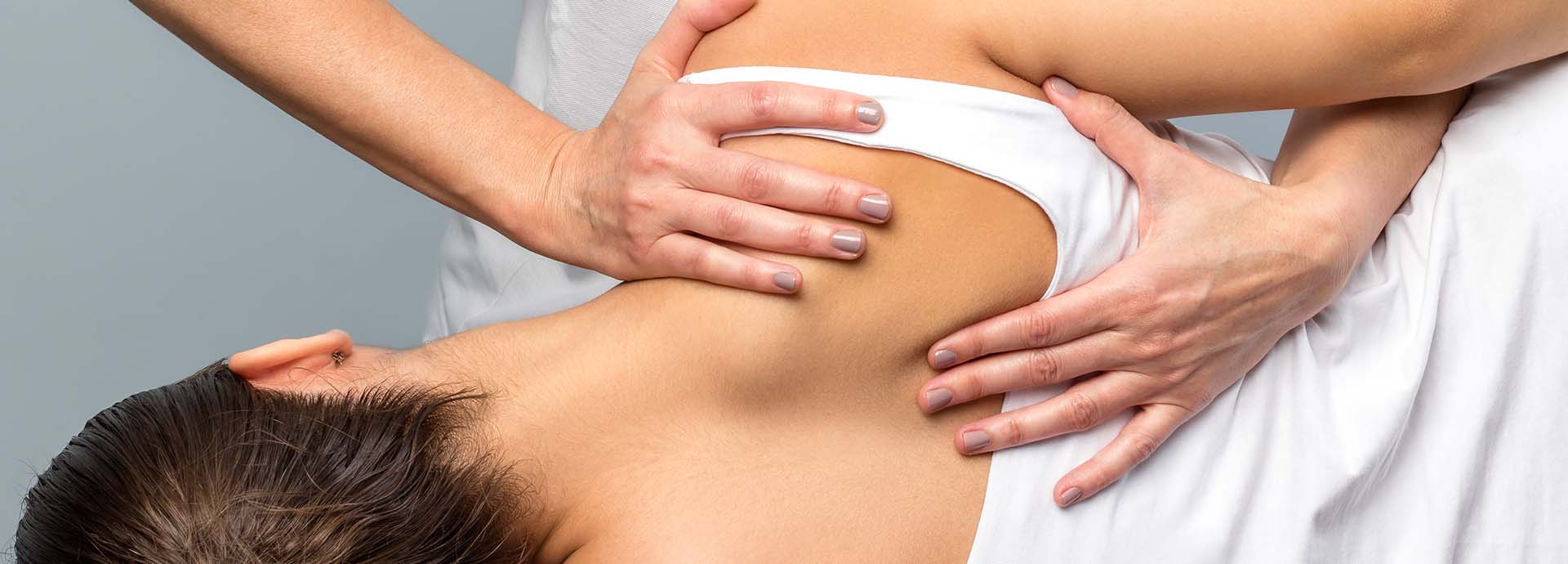
What is Osteopathy?
Osteopathy is a diagnostic and therapeutic approach that seeks to reestablish balance throughout the body, fostering general health and wellness. It regards the individual as a complete entity and does not focus solely on specific symptoms. Osteopathy employs a blend of tactile techniques, physical manipulation, massage, and stretching to enhance joint mobility, alleviate muscle tension, and boost blood and nerve circulation to connective tissues, ultimately facilitating the body's recovery to a state of good health.
What distinguishes Osteopathy from other medical disciplines is its fundamental philosophy. Osteopaths maintain that all body parts should operate in harmony with one another. If any one part experiences restricted motion, blood flow, or strength, the remainder of the body must adjust and compensate for the malfunction, resulting in knock-on effects. Osteopaths do not simply focus on treating the affected region; instead, they use a blend of soft-tissue and joint manipulation techniques to realign the body, enhance joint mobility, and boost blood flow. The objective of osteopathy is to ensure that all bodily systems operate in concert, fostering overall health and well-being. At our Littlehampton clinic, our osteopath Jacopo Saia addresses a broad range of symptoms.

Our Patients
There are many reasons why patients come and visit the clinic. Some will originally visit us with symptoms such as frozen shoulder, hip pain, back pain, neck pain, headaches, or arthritis, but once they are well again, many will keep coming back as the Osteopathy care they receive makes them feel great!
At the Littlehampton Natural Health Centre, we have many families visiting the clinic for regular treatments – this includes the children, Mum, Dad, Grandma, and Grandad, everyone is welcome!
We are passionate about sports! Not only do we see patients for sports injuries, but also lots of patients who understand how Osteopathic care can improve performance in their chosen sport. Many top athletes have Osteopaths as part of their team to help them to maintain their optimum function & performance.
Osteopathy is a mainstream healthcare profession that helps people from all walks of life.
What is the cause of your Symptoms?
The human body is a complex web of muscles, tendons, ligaments, joints, and nerves. When everything works as it should, everything seems effortless and smooth. However, when one part of this web stops working as it should; normal function turns to dysfunction, which in turn leads to pain, stiffness, tightness, loss of mobility, and many other limiting symptoms.
Unlike painkillers and antiinflammatories which can mask your symptoms, Osteopaths look to diagnose the main underlying cause of your symptoms and treat these accordingly. To find the cause we take a full case history, and perform a physical, this can include a range of motion testing, muscle strength testing, neurological examination, gait evaluation, and other specific functional tests. Should the Osteopath determine that further investigation is necessary, we can easily refer you for diagnostic X-Ray imaging locally. There may be times when we may need to refer you back to your GP for further tests.
Your Osteopath will use effective techniques to help restore your function and encourage your body’s own healing mechanisms.

Meet our Osteopath
We are a diverse team at Littlehampton Natural Health Centre, offering a fresh approach to health and well-being. We understand that one approach isn’t always what's needed and often a multi-disciplinary treatment plan can be more effective at achieving your long-term health aspirations.
Osteopath in Littlehampton
Jacopo is registered with the General Osteopathy Council and a member of the Institute of Osteopathy. Having graduated with a Masters's Degree in Osteopathic Medicine from the University of Kingston, studied both in Turin, Italy, and at Kingston University in Surrey. Following his passion for helping people, Jacopo has gained great experience working with patients of all ages and helping with a variety of conditions, integrating structural, craniosacral, and visceral osteopathy in order to assist the patient in the best possible way.
Jacopo is a dedicated and compassionate clinician, exhibiting excellent soft tissue skills, as well as high levels of technical performance. He is a very skillful Osteopath and is comfortable and capable of using a range of techniques including soft tissue massage, stretches, joint articulation, and spinal manipulation as well as offering exercise recommendations during his treatment sessions. His treatment focuses on investigating the main causes of symptoms, before providing a treatment plan tailored to your needs and advice to help prevent problems from arising again in the future.
Jacopo was awarded the 2021 Rising Star Award by the Institute of Osteopathy for his aspiring commitment to continue the development of the profession.
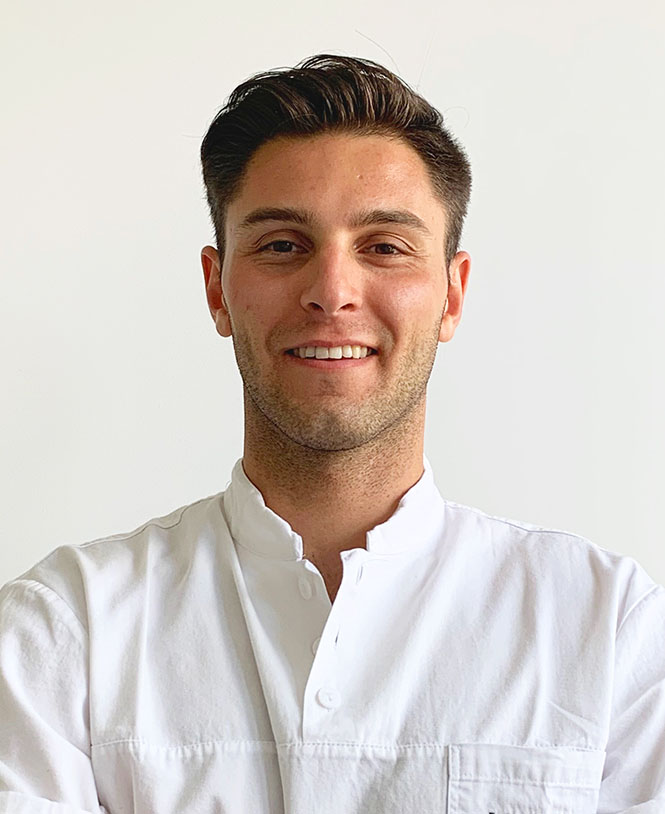

Common Symptoms
Patients visit Osteopaths with a variety of symptoms. Here are some of the most common symptoms;
Arm Pain

Frozen Shoulder
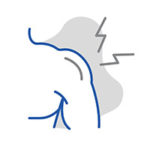
Knee Pain
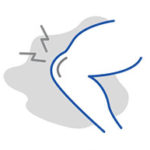
Hip Pain
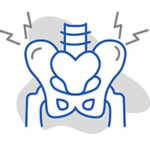
Middle Back Pain

Lower Back Pain
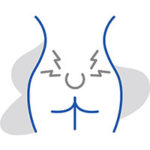

Book Your First Appointment Online
If you are ready to start your journey back to health, you can book your First Osteopathy Appointment in multiple ways. You can either call our friendly reception team on 01903 734373, or you can click the link below to go to our Online Booking page. The ability to book online isn't just available for new patients, this can also be used to book future Osteopathy appointments, allowing you the flexibility to book appointments at your leisure and from anywhere.
After booking your appointment, you will be sent 2 emails; the first will simply confirming your appointment is booked. The second will include a link where you can complete your New Patient Intake questionnaire, completing this prior to your appointment will allow your Osteopath to review the information before sitting down to consult with you.
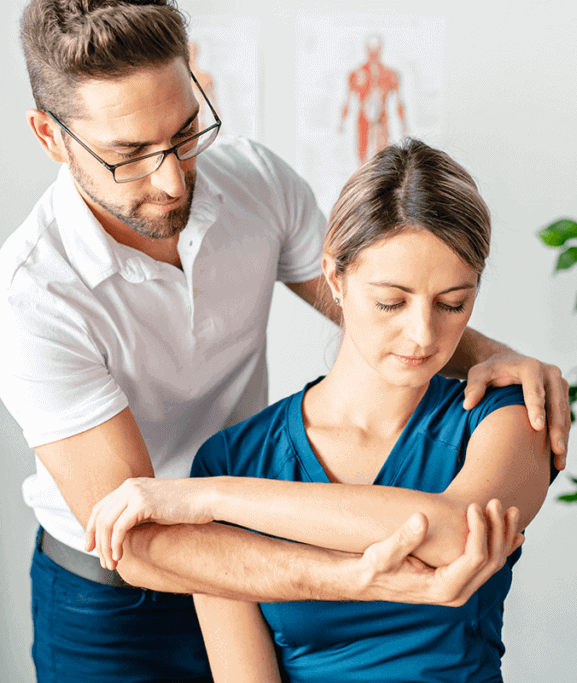

Checklist for New or Returning Patients:
If it is your first time visiting the clinic, or if you haven’t seen us for a few years, we like to spend some time going through your current and previous health and lifestyle, catching up, and ensuring we have a full view of your history. Below are some of the details you will need to complete on your Online Intake Form, or will need to bring along to your New Patient Appointment.
- List of current medications and dosage
- Details of diagnosed conditions (including dates)
- Details of operations and other medical procedures (including dates)
If you are able to complete the Online Intake Form prior to the appointment, this will give your Osteopath enough time to review these details prior to your appointment. If not, your Osteopath will run through these with you at your appointment and have the opportunity to review them in-depth prior to your next appointment, more information about these initial appointments is discussed below.

First Appointment - Initial Consultation
Your Osteopathy journey starts here... when you book your first appointment we will email you an online health questionnaire, helping your Osteopath to build a complete picture of who you are and why you are coming to see us. When you visit the clinic we will ask you to complete one more form, giving your Osteopath as much information about your symptoms and reason for visiting the clinic.
Your Osteopath will then consult with you about your symptoms, how they started, and what makes them better or worse, discuss any previous treatment you have tried and ask some specific questions to help them determine their next course of action. Once your Osteopath is happy they have all of the information about you and your symptoms, they will then proceed with the physical examination.
The physical examination will often start with an assessment of your range of motion, assessing which movements cause pain or are restricted, analysing your muscle tension and tone, and assessing your joint condition, helping to determine what is causing your loss of function and symptoms. Osteopaths are experts in locating the cause of your symptoms and loss of function, using their trained hands to palpate your joints and muscles, and applying a combination of gentle and firm pressure where needed. They will also check for any areas of inflammation or swelling and if needed will perform more advanced physiological and neurological testing.
Following your examination, it may be necessary to refer you for x-ray imaging to help us determine the underlying causes of your symptoms and ensure it is both safe and appropriate to continue with care. These x-rays will then help to form our rationale for care and ensure you are getting the most appropriate care based on your condition.
Once your Osteopath is happy they have all the necessary information to assess your case, they will discuss their initial findings, and if you are both happy they will proceed with your first treatment. This treatment is viewed as part of the examination, as once the Osteopath has located the soft tissue and joints which are causing your symptoms, they will then want to feel how your joints move, how the muscles release, and how these areas respond to treatment.
After your first treatment, your Osteopath will then study all of their notes, the findings of the physical examination, your health history, and if available any x-ray images. This will then allow them to create a treatment plan aimed at rehabilitation, restoring your function, and addressing your symptoms.
X-Ray Referral
When necessary we are able to refer you locally for diagnostic X-Ray imaging. The clinic we refer to has the most up-to-date onsite digital X-Ray facilities to help us assess and diagnose the underlying causes of your symptoms. For the most part, Osteopaths rely on specific tests and palpation skills to diagnose the cause of your symptoms. However, there may be situations where the Osteopath decides an X-Ray is required.
X-Ray imaging can be used to investigate almost any area of the body for reasons including:
- Trauma Injuries – any broken or fractured bones, swelling, or dislocations will need to be confirmed before any form of treatment can start.
- Scoliosis – undiagnosed scoliosis will need to be confirmed by X-Ray to find out the full extent of any structural changes.
- Degeneration – if your Osteopath suspects you may have some degeneration such as arthritis this can be confirmed through X-Ray imaging.
- Infections – any serious infections which could be causing damage can usually be picked up on X-Ray.


Report of Findings
Following your New Patient Appointment, your Osteopath will spend time studying their notes and findings from your appointment. This will include studying your intake form (which includes all of your health histories), primary complaint form (which includes information about all of your symptoms and reason for visiting us), all of their notes from your consultation, the findings of your physical examination, and if you have needed X-Rays they will need to study these in detail. If you have had X-Rays, these images are sent to a Medical Radiologist for a second opinion and to ensure nothing is ever missed.
Having studied your case fully and compiled all of this information together, your Osteopath will then form the most appropriate treatment plan aimed at rehabilitation, restoring your function, and addressing your symptoms. These treatment plans are different for each patient and typically follow this rough structure;
Phase 1; the first phase of care is typically focused on restoring motion to areas of the body that your Osteopath has determined are most dysfunctional, restricted, or have the tightest muscles. This will often include specific at-home stretches to encourage and maintain optimal joint motion between each of your Osteopathy treatments. This first phase of care is typically the most intensive phase of care, lasting from 2 to 4 weeks and with treatments 1 to 2 times per week. The exact frequency and length of the first phase are determined on a case-by-case basis and personalised to your recovery plan.
Phase 2; following successful completion of the initial phase of care, you will then move into the second phase, which is focused on increasing strength and stability to the areas most needed, most importantly the areas which have needed the most amount of work during the first phase, or the areas which are the weakest in your body and core. To complement the stretches in the first phase, your Osteopath will often recommend various strengthening exercises to help increase muscular tone, strength, and stability throughout your body. This second phase of care is typically at a lesser frequency of treatment, lasting from 2 to 8 weeks and with treatments every 1 to 2 weeks apart. The exact frequency and length of the second phase are determined by how you have responded to the first phase of care and personalised to your recovery plan.
Phase 3; by the end of the second phase of care, we would expect the majority of patients to have their symptoms under control, experience increased flexibility, and improved ability, feel stronger and more stable, and overall experience higher levels of well-being. The third phase of care is different for each individual, we typically have two directions from this point; some patients will be discharged at this stage, with either your Osteopath or yourself feeling like they have achieved everything you wanted. For those not continuing treatment, we still suggest a continuation of regular stretching and strengthening exercises to maintain your progress. In some cases, a maintenance schedule of care can be recommended, aimed at maintaining your motion and function over a longer period of time. This can be important in cases where we have found evidence of joint degeneration, as these areas can be prone to stiffening and becoming dysfunctional far quicker, and can be harder to self-manage through only stretches and exercises. At the end of your second phase of care, your Osteopath will consult with you on all options, allowing you to make an informed decision on the best path forwards for yourself.

What Does Treatment Involve?
Osteopathic treatment can involve many different forms of care. For the most part treatment centers around joint mobilisation, soft tissue release, and joint manipulation aimed at restoring optimal function by increasing soft tissue flexibility, increasing motion and decompressing your joints; allowing your body to heal and restore overall function.
Patients visit Osteopaths for many different reasons and with varied symptoms. Common reasons people visit Osteopaths include (but are not limited to) feeling restricted in movement, pain or discomfort, injury, fall, post-operative rehabilitation, tight muscles, feeling imbalanced, headaches, sciatica, among many others.
Osteopathy isn’t only useful for acute or chronic conditions, Osteopaths can also help prevent problems by pinpointing potential sources of pain before they develop further. Prevention of always better than the cure, so maintaining your body's movement is key to a healthy and mobile body in the long term.
Osteopaths do not only focus on treating the symptomatic area but use a combination of soft-tissue and joint manipulation techniques to help re-balance the body, improve joint motion, and increase blood flow. Osteopathy wants all systems in the body to work together, providing overall good health and well-being. At our clinic in Littlehampton, our Osteopath Jacopo Saia treats a variety of symptoms.
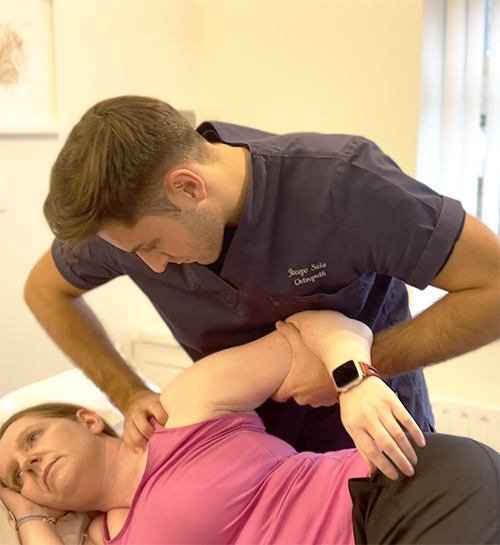
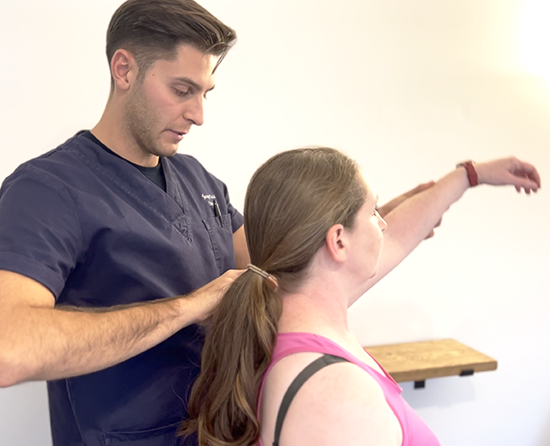

FREE Assessment
If you are unsure whether Osteopathy treatment is the right option for you, we would like to invite you to attend a FREE Assessment. This is an opportunity for you to come and consult with our Osteopath at NO charge. What does the FREE Assessment entail and how could it help you?
- Intake Form - prior to the appointment we are going to ask you to complete a new patient intake form, this will provide your Osteopath with your health and lifestyle background, allowing them to build a complete picture of your health.
- Primary Complaint Form - this will be completed at the clinic before your appointment, this form focuses on your symptoms and reason for visiting the clinic. It will ask questions about where your symptoms are, what they feel like, when and how they started, and other relevant questions.
- Consultation - this is where your Osteopath will discuss your symptoms, and ask leading questions which will help them to gain all relevant and required information to determine the best and most appropriate course of action.
- Examination - after your Osteopath has all of the information they require, they will then perform a brief examination to assess your range of motion, muscle tension, and function and try to determine which areas are causing your symptoms.
- Explanation of Findings - after your Osteopath has consulted with you and examined your body, they will then explain their initial findings and what they recommend next.
Book Your FREE Assessment
To book this FREE Assessment appointment, please either call us at 01903 734373, or you can Book Online by either clicking the link below or following the steps on this page.

What's Next?
If after your consultation and examination, your Osteopath is satisfied that they are able to help you and you would like to start your Osteopathic journey, they will then explain the next stages. This could include a more thorough examination of your body, or any need to refer for diagnostic imaging (X-Ray or MRI). Once they have all the information required, they will look to perform their first treatment. If you do decide to proceed with treatment or any diagnostic images, these will be chargeable and any costs will be discussed fully with you prior to proceeding.
To book this FREE Assessment appointment, please either call us at 01903 734373, or you can Book Online by either clicking the link below or following the steps on this page.

The Reception staff - Carly, Lana and Nancy are very helpful and friendly too.
This has been my first experience of visiting a chiropractor and my I was put totally at ease and everything was explained well before procedure took place.
Frequently Asked Questions
Osteopathy is a system of diagnosis and treatment aimed at restoring and maintaining balance in the entire body, promoting overall health and well-being. It looks to treat the individual as a whole and is not isolated to the specific symptoms. Osteopathy uses a combination of touch, physical manipulation, massage, and stretching to help improve the mobility of joints, relieve muscle tension and promote blood and nerve supply to connective tissues which in turn will help your body to return to a good state of health. No. We view every patient on an individual basis and formulate treatment plans to suit them. On some visits there may only be one or two areas that require treatment, however, sometimes the many areas and other parts of the body (wrists, shoulders, elbows etc) may require attention. Osteopathy sets it apart from other medical disciplines through its core philosophy. Osteopaths believe that all parts of the body should function together in a complementary manner. Should one part of the body be limited in its motion, blood supply, or strength; then the rest of the body needs to adapt around the dysfunctional area and compensate for this, causing knock-on effects. Osteopaths do not only focus on treating the symptomatic area but use a combination of soft-tissue and joint manipulation techniques to help re-balance the body, improve joint motion, and increase blood flow. Osteopathy wants all systems in the body to work together, providing overall good health and well-being. At our clinic in Littlehampton, our Osteopath Jacopo Saia treats a variety of symptoms. Osteopaths have to complete a 4-year Masters Degree in Osteopathic Medicine (MMOst). Over the course of this degree, they study human anatomy, physiology, biochemistry, neurology, pathology, rehabilitation, differential diagnosis, patient assessment and philosophy. Over the four years, Osteopaths develop their practical skills working on patient assessment, physical screening and safe effective treatment. Once qualified the learning doesn’t stop, the General Osteopathic Council stipulates Osteopaths must complete 30 hours of CPD (continuing professional development) each year, which includes further training courses, research, and many other learning activities. Yes. Your Osteopath has completed over 4 years of training and has years of experience in practice. Osteopaths are experts in assessing and correcting dysfunction in the joints and soft tissue. Osteopaths also have to complete a minimum of 30 hours of CPD (continual professional development) to keep up to date with the latest research and techniques.

What is an Osteopathic treatment like?
Gentle & Effective Osteopathic Treatment
Osteopathic treatment is gentle and effective, being tailored to each specific patient and using precision and minimum force. As well as the hands-on treatment you may also be provided with advice on how to maintain the benefits of the session going forwards. This can include stretches and lifestyle advice to help you stay in good health.
As a new patient, your Osteopath will spend time understanding your problem, your medical history, and any previous treatments you have had as well as conducting clinical testing where necessary. A full Osteopathy consultation allows the treatment to be given in a way that is unique to you, as no two bodies are the same. They will also assess the balance and integrity of your whole musculoskeletal system to fully comprehend where underlying causes may lie.
With this information, the Osteopath forms a considered plan for treatment and can apply it with gentle precision. Their extensive training combined with the information gained following a consultation makes it possible to encourage your body’s healing faculties to overcome the problem.
Craniosacral Osteopathy
The aim of craniosacral osteopathic treatment is to address the stresses and strains within the body, helping to realign the balance of the spine through assessment and treatment of the cranium (skull) and sacrum (pelvis), releasing stresses to release allowing the body to function better. An osteopath's core principle is that one’s structure governs their function, so therefore if the physical structures in your body are in a state of balance and harmony, it will be able to function at its best; with the opposite also being true. Craniosacral treatment is one of many techniques our Osteopath can use to help you function and feel at your best.
What can you expect from an Osteopathic visit?
For most patients manual care is just one part of the care plan, we also provide education, exercises, and stretches to empower you to help yourself!
If you’re unsure whether Osteopathy is the right option for you please come in for a FREE Assessment. To book this FREE Assessment, please either call us at 01903 734373, or you can Book Online by either clicking the link below or following the steps on this page.
Book Your FREE Assessment Call To Book - 01903 734373
Look forward to seeing you soon!
- Littlehampton Natural Health Centre
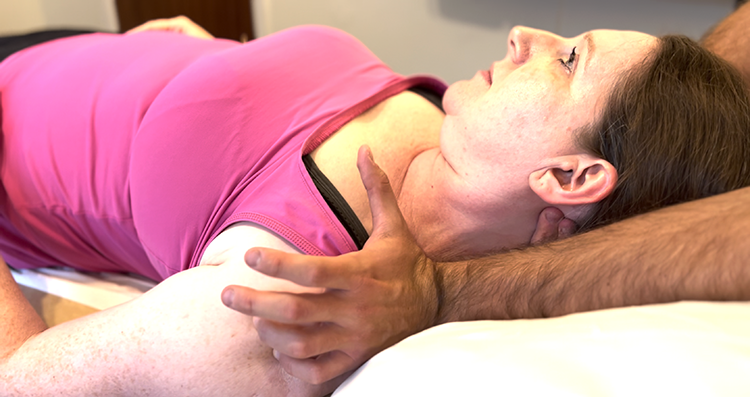

Find Us
Conveniantly Located in Littlehampton, West Sussex
simply click the link below and check availability.
